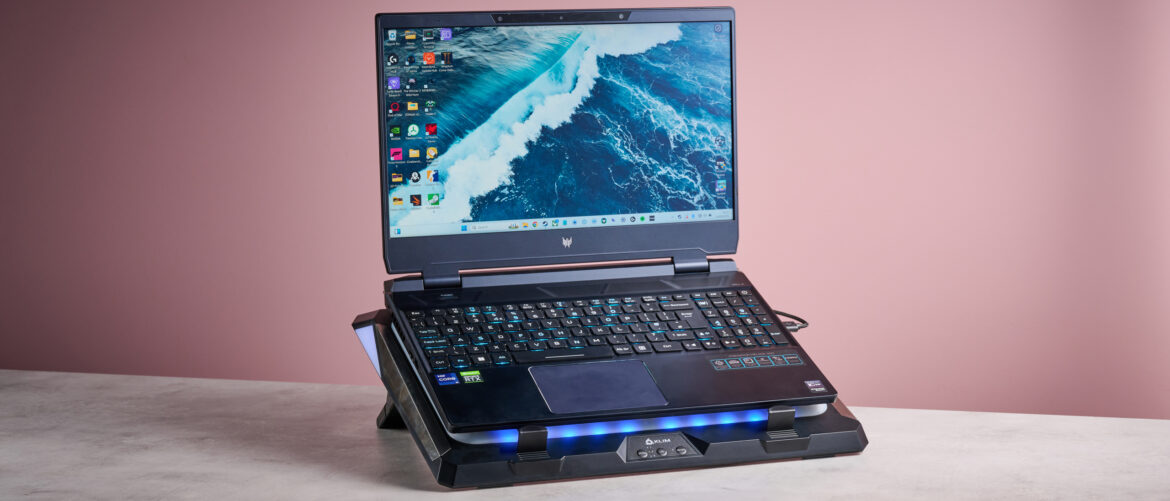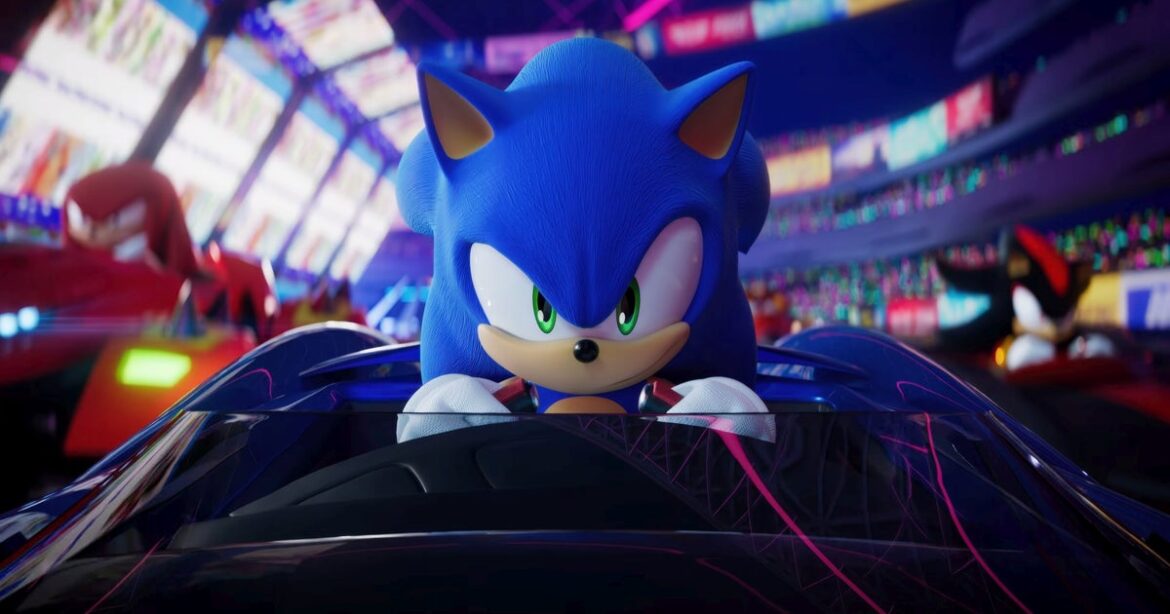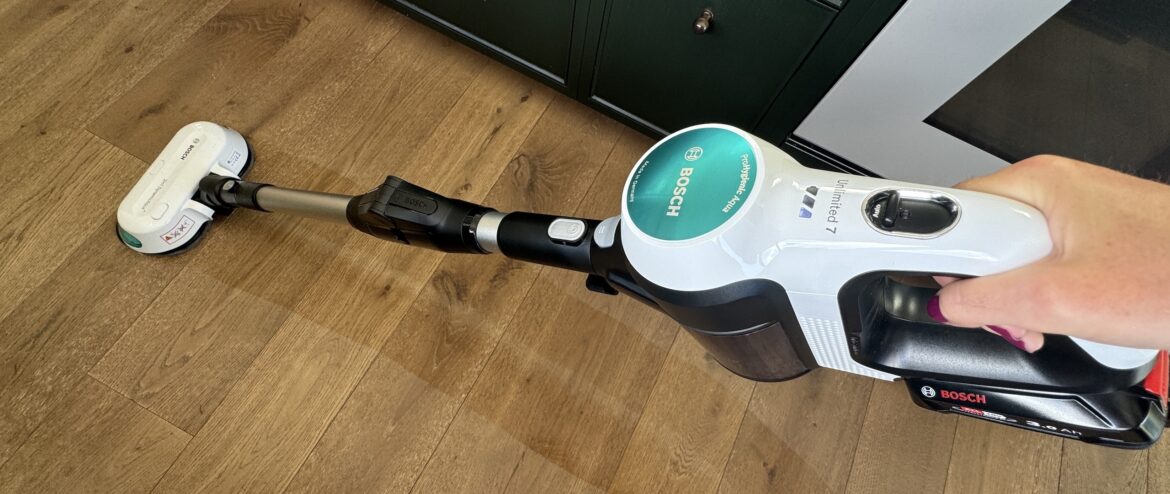Why you can trust TechRadar
We spend hours testing every product or service we review, so you can be sure you’re buying the best. Find out more about how we test.
Klipsch Flexus Core 300 Soundbar: One minute review
Klipsch Flexus Core 300 soundbar with optional Flexus SURR 200 rear speakers and Flexus SUB 200 subwoofer (Image credit: Future)
The Klipsch Flexus Core 300 isn’t the cheapest Dolby Atmos soundbar you can buy, but those who can afford it will find it matches the best Dolby Atmos soundbars on just about every level.
Now, it might not be the best soundbar for everyone. Aside from the big price tag, it’s also physically big. But it does everything else right. It has all the ports one could want, and it has all the features you’d expect to see in the best soundbars. Most importantly, it sounds really good. And once you set it up with the Dirac Live feature, the sound quality goes from really good to great. It’s that last bit that really puts it over the edge for me.
If you’re looking for a soundbar system that gives a true theater experience at home, the Klipsch Flexus Core 300 is more than capable, and the experience gets even more immersive when you add the accompanying surround speakers and subwoofer.
- Klipsch Flexus Core 300 at Sweetwater Sound for $1,199
Klipsch Flexus Core 300 review: Price & release date
Klipsch Flexus Core 300 system packaging (Image credit: Future)
- Price: $1,199.99 / £1,049.00 (about AU$1,830)
- First available: September 2025
The Klipsch Flexus Core 300 soundbar system reviewed here is anything but cheap. In fact,the Core 300 soundbar, with the Sub 200 subwoofer, and Surr 200 surround speakers that I tested will set you back an eye-wateringly high $2,299.97 / £1,827 (about AU$3,500).
Individually, the Core 300 soundbar goes for $1,199.99 / £1,049.00 (about AU$1,830), while the Sub 200 subwoofer is $599.99 / £419.00 (about AU$910) and the Surr 200 surround sound speakers are $499.99 / £359.00 (about AU$760) per pair. There are cheaper versions available of the subwoofer and surround speakers, so you can get away with a lower system cost, but you won’t have the same experience.
Also. Aussies will have to sit this one out (at least at the time of writing).
Klipsch Flexus Core 300 review: Specs
Swipe to scroll horizontally
Dimensions (W x H x D)
soundbar: 54 x 3 x 5 inch / 1371 x 76.2 x 127mm; subwoofer: 15.25 x 15.25 x 15.25 inches (387 x 387 x 387mm); surround speaker: 4.1 x 8.75 x 4.31 inches 105 x 222.25 x 109.5mm
Speaker channels
5.1.2 (soundbar), 7.1.4 (with sub and surround speakers)
Connections:
HDMI 2.1 passthrough, HDMI eARC, USB-C, optical digital, subwoofer output, Bluetooth
Dolby Atmos/DTS:X
Yes/Yes
Sub included
Available separately
Rear speakers included
Available separately
Features
4K 120Hz passthrough, Dirac Live room calibration, AirPlay, Google Cast, Google Home support
Klipsch Flexus Core 300 review: Features
The Klipsch Flexus Core 300 soundbar and the optional wireless sub and rear speakers uses wireless dongles to transmit and receive audio signals (Image credit: Future)
- Dolby Atmos and DTS:X support
- Night and dialog
- Can adjust the volume of individual speakers
As you would expect from its price, the Klipsch Flexus Core 300 is feature-filled. It supports both Dolby Atmos and DTS:X, and you can add an optional subwoofer (or two subwoofers since dual subs are supported) and wireless surround speakers for a full surround sound experience. On top of that, it has built-in Dirac Live, a calibration software that minimizes the effects of room reflections on the sound.
The Flexus Core 300 features movie and music modes, along with a night mode that compresses the audio dynamic range for late-night viewing. A dialog mode offers three different levels to emphasize the specific part of the mid-range where dialog sits. This is a bit more subtle than what I’ve found on other soundbars, but still effective.
In the app, there are quite a few additional options for fine-tuning the sound. There’s a three-band EQ, and you can adjust the individual volume of each channel if you feel like something is out of balance. The only thing missing, surprisingly, is any kind of voice assistant support – a feature typically found on the more expensive soundbars.
WiFi streaming supports Spotify Connect, Tidal Connect, AirPlay, and Google Cast. Google Home is the only supported smart home ecosystem.
Klipsch Flexus Core 300 review: Performance
Both the Klipsch Flexus Core 300 soundbar and SUB 200 subwoofer are large compared to most soundbar systems (Image credit: Future)
- Basic sound quality is very good
- Dirac Live elevates sound clarity
- Immersive soundstage
There are two experiences when listening to the Klipsch Flexus Core 300: with and without Dirac Live. Without it, the soundbar sounds very good. Action movies like The Workman have that oomph you expect from a movie theater experience, where you can just feel the subwoofer. Whether it’s a sound effect of someone getting punched or the low notes in the score that add a sense of foreboding, the sound has an impressive sense of weight to it.
The treble is as good as you would expect from a soundbar this pricey as well, with synths, flutes, and windchimes sounding crisp with no loss of detail.
The mid-range is what suffers the most without Dirac Live as it sounds a bit overstuffed without adjustments and dialogue can get lost just a little bit. You can offset with a three-band EQ that provides a 6 dB boost or cut, and changes to the EQ, even with presets active, are noticeable.
But, the real solution is to use Dirac Live (which I describe below in the usability and setup section). Once you’ve gone through the Dirac Live setup, the soundbar will create a custom EQ profile to adjust for the reflections of soundwaves bouncing around your media room, and the difference is stark. Dirac Live makes this soundbar go from good to amazing, with everything sounding clean, especially in the mid-range.
I watched The Batman, the first episode of The Residence, and an Eagles vs Cowboys football game, along with plenty of music during my testing. No matter how complex the soundtrack or music was, I could hear everything with precision. That alone justifies the Flexus Core 300’s price. Other room calibration systems I’ve tried can be very good, but this one is great.
I also experienced immersive sound when testing the surround sound speakers, even when they were not as widely placed as they should be. For the most part, their presentation was subtle; I would almost not realize that there was audio coming through them until I paid attention and realized that I was hearing the sound of wind.
Klipsch Flexus Core 300 review: Design
The Klipsch Flexus Core 300 has a bright alphanumeric LED display for control feedback (Image credit: Future)
- Modern, elegant look
- Large soundbar and subwoofer
- Extensive ports
While the Klipsch Flexus Core 300 comes in basic black, there’s something about its look that’s more elegant than a lot of the competition. (A walnut version is also available.) The soundbar and subwoofer both have wood grain showing through the black (not so for the surround sound speakers), and a silver Klipsch logo is featured prominently on each unit.
Now, don’t mistake that elegance for compact. This isn’t Apple. The Klipsch Flexus Core 300 soundbar is 54 inches wide, and the SUB 200 subwoofer is a 15-inch cube. The SURR 200 surround speakers are just under nine inches tall and a bit over four inches wide and deep. If you’re limited on space, this is not the system for you.
Focusing on just the soundbar, I really appreciate that the Klipsch Flexus Core 300 has an alphanumeric LED display that’s bright and sizable enough that it’s easy to read.
As far as controls go, most of the functionality is either on the remote or in the app. The soundbar itself just has power, input, and volume up and down buttons situated off-center on top.
The Flexus Core 300 comes with just about everything portone could ask for, including but not limited to multiple HDMI ports featuring eARC and 4K 120Hz passthrough, along with an optical digital input and RCA subwoofer output. Of course, there’s Bluetooth as well.
Most of your interaction with the soundbar will probably be through the remote. While I wish it was rechargeable instead of using AAA batteries, that’s really the only criticism I can throw at it. It feels good to hold with its rounded back, and the layout allows you to adjust most functions without having to use the app, including switching sound modes and adjusting the volume of the surround speakers and subwoofer.
Klipsch Flexus Core 300 review: Setup & usability
Klipsch’s control app lets you adjust all system functions and is also used for Dirac Live calibration (Image credit: Future)
- Generally easy to set up
- Sub and surround speakers use wireless dongles
- Dirac Live calibration requires silence
Klipsch packs the soundbar, subwoofer, and surround speakers with their own manual, and setting them up is a fairly straightforward process, though not exactly plug-and-play. I’ve set up a few soundbar systems with wireless connections before, and those typically get paired right out of the box. Here, both the subwoofer and surround sound speakers come with their own wireless dongle that needs to be plugged into the soundbar before pairing.
Considering that the sub and surround speakers are separate purchases, that makes sense. But it’s an additional step, and you have to press the pairing button on each external speaker and wait for the soundbar to connect.
If you want to get the most functionality out of Klipsch’s system, you also need to set up the app. This part was easy – all I had to do was connect it to Wi-Fi and answer some personalization questions.
The only thing I found a little difficult was setting up the Dirac Live calibration, which is finicky compared to other automatic calibration systems I’ve used. But then again, Dirac Live is the standard that audiophiles use for room correction.
The soundbar comes with a wired microphone that gets placed around the sitting area, and the calibration process requires complete silence. If a pet passes by or someone calls out during the ten-minute Dirac Live calibration, or if the air conditioner is too loud, then the test will fail and need to be run again.
- Setup & usability score: 4.5 / 5
Klipsch Flexus Core 300 review: Value
Klipsch’s SURR 200 rear speakers are easy to setup and deliver immersive surround sound (Image credit: Future)
- Expensive compared to other premium soundbars
- Other premium systems not as well designed
- Competition doesn’t support Dirac Live
As great as the Klipsch Flexus Core 300 Soundbar System is, it’s expensive compared to the competition. That’s especially true if you compare the system to premium models from large manufacturers like Samsung and LG, and not boutique audiophile brands that typically go for even more money.
As far as specific examples go, the LG S95AR is an impressive soundbar system in its own right – I gave it a very favorable review – and comes with surround speakers and a subwoofer without requiring an extra purchase. Its price tag of $1,699.99 (about £1,260 / AUD$2,610) might seem higher than the Flexus Core 300’s price tag of $1,199.99 / £1,049.00 / AU$1,695, but it’s actually a good deal when you consider it’s a complete package. The Klipsch is more aesthetically pleasing and sounds better, but both are quality systems.
The Samsung HW-Q990F, which retails for $1,799 / £1,699 / AU$1,995. Is a feature-filled 11.1.4 system that also makes the Klipsch Flexus Core 300 Soundbar System feel overpriced. Again, there’s a difference in aesthetics and the Samsung (along with the LG) doesn’t support Dirac Live room calibration, although they do provide their own proprietary calibrations.
Should I buy the Klipsch Flexus Core 300?
Swipe to scroll horizontally
Section
Notes
Score
Features
Dolby Atmos, DTS:X, Night and Dialog mode are all here along with Dirac Live room EQ
5 / 5
Performance
Very good immersion and basic sound quality that is strongly enhanced by Dirac Live
5 / 5
Design
Classy looking and with an LED display, but large for a soundbar
4.5 / 5
Setup & usability
Relatively easy to set up, though Dirac Live calibration can be finicky if you don’t have complete silence
4.5 / 5
Value
As great as this soundbar system is, it’s among the more expensive options
4 / 5
Buy it if…
Don’t buy it if…
Klipsch Flexus Core 300 review: Also consider
Swipe to scroll horizontallyHeader Cell – Column 0
Klipsch Flexus Core 300
Samsung HW-Q990F
LG S95AR
Sonos Arc Ultra
Price
$1,199.99 / £1,049.00 (about AU$1,830)
$1,999 / £1,699 / AU$2,099
$1,699.99 (about £1,260 / AU$2,610)
$999 / £999 / AU$1,799
Dimensions (w x h x d)
Soundbar: 54 x 3 x 5 inch / 1371 x 76.2 x 127mm; subwoofer: 15.25 x 15.25 x 15.25 inches (387 x 387 x 387mm); surround speaker: 4.1 x 8.75 x 4.31 inches 105 x 222.25 x 109.5mm
Soundbar: 1232 x 70.8 x 138 mm (48.5 x 2.8 x 5.4 inch); Subwoofer: 249 x 251.8 x 249 mm (9.8 x 10.0 x 9.8 inch); Rear speaker: 129.5 x 201.3 x140.4 mm (5.1 x 8.0 x 5.5 inch)
Soundbar: 49.2 x 2.5 x 5.3 in (1250 x 63.5 x 134.6mm); subwoofer: 7.9 x 16 x 15.9 in (200 x 406 x 404mm); rear speakers: 6.3 x 8.8 x 5.6 in (160 x 223.5 x 142mm)
2.95 x 46.38 x 4.35 inches (75 x 1178 x 110.6mm)
Speaker channels
5.1.2 (soundbar), 7.1.4 (with sub and surround speakers)
11.1.4
9.1.5
9.1.4
Connections
HDMI 2.1 passthrough, HDMI eARC, USB-C, optical digital, subwoofer output, Bluetooth
1x HDMI out (with eARC), 2x HDMI 2.1 in, optical digital audio, Wi-Fi, Bluetooth
2x HDMI (1 with eARC), optical, digital, Bluetooth, USB type-A
1x HDMI with eARC, Ethernet, Wi-Fi, Bluetooth
Dolby Atmos/DTS:X
Yes/Yes
Yes/Yes
Yes/Yes
Yes/No
How I tested the Klipsch Flexus Core 300 Soundbar
(Image credit: Future)
- I used the Klipsch Flexus Core 300 Soundbar system for several weeks
- Tested with TV, movies, games, and music
I used the Klipsch Flexus Core 300 Soundbar System regularly for several weeks with TV, movies, games, and music. I tested the different modes and inputs, and I spent a lot of time with the Dirac Live calibration.
I’ve tested plenty of tech gear over the years ,from laptops to keyboards and speakers, and so have been able to use my expertise towards giving an honest and fair opinion, not to mention a critical eye, to any product I test.
Read more about how we test
- First reviewed: September 2025
Klipsch Flexus Core 300: Price Comparison










